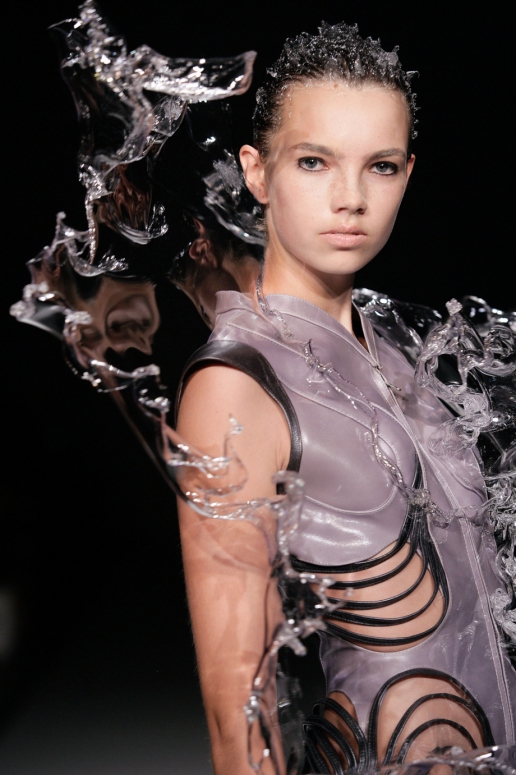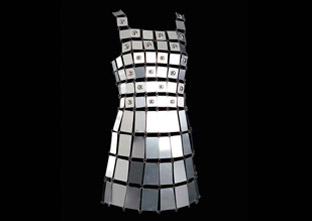
These plastics were born to be elegant
A huge success
Innovation always goes hand in hand with war. The historical turning point for plastics was, of course, World War II. To meet the challenges set by this war, the research of the major nations involved in the conflict focused on the need to find materials that could be used as a substitute for the dwindling supply of natural materials. The first polymers such as Bakelite, galalith (erinoid), polystyrene or even PVC had already been around for a few decades. However, World War II and the years of reconstruction would give a significant boost to the chemical industry and therefore, of course, to the plastics industry. The world was beginning to get back on its feet by the end of the 1940s and demand was high for everything. Manufacturers were being adventurous and extending the boundaries of research…Plastic items became a necessity; plexiglass as a wonderful substitute for real glass, celluloid as a replacement for horn, shell or ivory, formica for its wood-like appearance and even nylon.


The first plastics to establish themselves were the cellophane films often used for wrapping bouquets of flowers. Were they not much more chic than a few sheets of newspaper? These new materials had a modern and elegant image and would experience phenomenal success from the 1950s onwards. Shortages were a thing of the past in the wealthier countries. Chemical engineers put their noses to the grindstone and were given carte blanche to find new molecule combinations. There was, however, one condition: that they could be exploited without delay for direct use in the manufacturing industry. This heralded the arrival of polypropylenes, polystyrenes, PVC, etc.
From the kitchen to the table

Waxed cloth tablecloths, formica furniture…Not so long ago, these were still considered to be the height of modernism. PVC waxed tablecloths adorned the tables of the world. There was an endless range of colours, designs and combinations giving housewives a variety of options. Formica furniture signalled the arrival of colour in the kitchen. This was not simply modern, it was “hip”. Always in keeping with the spirit of the times, film makers of the period never failed to include a scene in a formica kitchen in their plans. The 1960s were also the era of the food processor, the vacuum cleaner, the bottle top and even, in 1968, the first plastic bottles, just a tenth of the weight of their glass counterparts.
Worthy descendants
Out of favour and fashion since the 1980s, formica is now making a major comeback in interior design magazines. Returned to popularity by the use of new designs and colours, it is increasingly attracting the interest of a new generation of designers. In a very competitive market, top-of-the-range kitchen designers know how to fully exploit the remarkable characteristics of polymers. Melamine sheets, polyurethane/acrylic lacquers…the furniture shines, is soft to the touch and stain-resistant. With American-style kitchens fashionable, people are now keen to display these rooms. It also stands in for the dining room, becoming a central living area, so it has to be both attractive and comfortable! Sixty years after the invention of formica, we are even more proud to put our kitchens on show!


And what should we make of the amazing comeback of inflatable vinyl furniture, assorted polyester accessories and PVC flooring? Even the luxury labels look on them favourably, such as the Italian fashion house Missoni who, in partnership with Bolon from Sweden, world leaders in woven vinyl flooring, are offering a colourful flooring using the patterns from their famous sweaters. It still looks original and imaginative, but is more flexible now due to the PVC coating. Its smoothness is evident in the table sets, which have the look of original materials achieved by embossing. The Finnish label Marimekka has recently opened a shop devoted to its tablecloths on 5th Avenue in New York. How about that?!
Fashion phenomenon

In 1966, the fashion designer Paco Rabanne hit the headlines by parading a model in a dress made from rhodoid, a polymer developed during World War I, and metal. This was a time when many designers wanted to move away from traditional materials. Paco Rabanne threw away his needle and thread. He was a pioneer, and destined to remain so for a very long time! Fifty years later, some of the great names in fashion also distance themselves from some supposedly fine materials. Versace surprised us last year by parading models clothed in gleaming dresses made of leather and silk, with strips of transparent plastic and silicone. Galliano’s contribution was a pair of Plexiglas bowler hats — actually made from Perspex®, a flexible derivative of PMMA.
And it has already been a few years since the designers at the Louboutin fashion house presented their famous and colourful range of PVC shoes. Shourouk’s PVC bags embroidered with Swarovski crystals have already become a great success among fashion aficionados.
Do you know Nancy, Yvonne, Louella, Olivia and Nina? They are the wives of the engineers at Du Pont de Nemours who developed a synthetic fibre that was to revolutionise the world: nylon. What about these women? Look carefully at their initials…From the post-war period, the success of this fibre would be astonishing. Women were soon to take it to their hearts. While this new material, thanks to its elasticity, snugly followed the curves of the leg, it was in particular much more robust and less expensive than silk, which it imitated perfectly. Much more than a passing fancy of fashion, today’s tights and stockings made from synthetic materials all have their place on the Haute couture catwalks. With a base of spandex and other microfibres, they have a varied, transparent, shining and grainy appearance that appeals to women. And as for its feel against the skin, the renowned “pétale de rose” still has no reason to be envious of silk.






